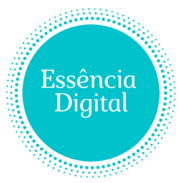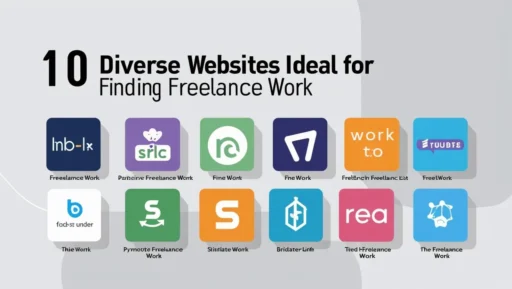Your Gateway to a Global Freelance Career
Finding a steady stream of clients is the single biggest challenge for any freelancer, especially when starting out. The days of relying solely on local networks and cold calls are over. Today, the freelance economy thrives on a global scale, powered by digital platforms that connect talented professionals with businesses in every corner of the world. These websites are far more than simple job boards; they are comprehensive ecosystems designed to support your entire freelance journey.
Whether you’re a writer, designer, developer, or marketer, mastering these platforms is a crucial step in building a successful and sustainable freelance career. They provide the infrastructure for you to showcase your skills, manage projects, communicate with clients, and ensure you get paid securely. This guide provides an overview of ten of the most reputable and widely used websites perfect for finding freelance work today.
The All-Rounder Marketplaces: High Volume, Broad Appeal
These large, established platforms are often the best starting point due to the sheer volume and variety of projects available.
1. Upwork
As one of the world’s largest freelance marketplaces, Upwork connects millions of professionals with clients of all sizes. It’s a vast ecosystem where you can find everything from quick tasks to long-term, full-time contract roles.
- The Model: Clients post jobs, and freelancers submit detailed proposals. Projects can be hourly, with time tracked via Upwork’s desktop app, or fixed-price, with funds held in escrow for your protection.
- Best For: A wide range of professionals, especially writers, marketers, virtual assistants, and web developers.
- Pro-Tip: Your proposal’s first two sentences are critical. Use them to prove you’ve read the client’s brief and have a specific insight into their problem. Avoid generic openings at all costs.
2. Fiverr
Fiverr revolutionized the freelance world by allowing freelancers to “productize” their services into “gigs.” This model puts the freelancer in the driver’s seat, defining the service, price, and turnaround time upfront.
- The Model: You create pre-defined service packages (e.g., “I will design a 3-page website”). Clients browse and purchase these gigs like products in an online store.
- Best For: Freelancers with a clearly defined, repeatable service, such as logo design, voice-over work, SEO audits, or article writing.
- Pro-Tip: Create three tiered packages for your gig (Basic, Standard, Premium). This is a powerful psychological tool that encourages clients to choose the higher-value (and higher-priced) options.
3. Freelancer.com
One of the oldest platforms, Freelancer.com hosts a massive variety of projects and is known for its “contest” feature, which can be a good way for new designers to build a portfolio.
- The Model: A combination of project bidding and design contests.
- Best For: A very broad range of freelancers, but be prepared for intense competition, especially on price.
- Pro-Tip: To stand out from the high volume of low-cost bids, focus on building a 5-star reputation with your first few clients. Positive reviews are your most valuable currency here.
4. PeoplePerHour
Popular in the UK and Europe, PeoplePerHour offers a hybrid model that combines project bidding with fixed-price packages called “Hourlies.”
- The Model: Freelancers can bid on projects or sell pre-packaged services.
- Best For: Digital professionals looking to connect with a strong European client base.
- Pro-Tip: Utilize the profile’s video introduction feature. A short, professional video where you speak directly to potential clients can build trust and rapport much more effectively than text alone.
5. Guru
Guru provides a robust platform for freelancers to showcase their experience and manage projects. Its “WorkRooms” offer a comprehensive space for collaboration, communication, and payment management.
- The Model: A traditional project bidding marketplace with strong project management tools.
- Best For: Experienced freelancers and small agencies who need powerful tools to manage complex projects.
- Pro-Tip: Fully complete every section of your profile and portfolio. Guru’s search algorithm favors detailed, well-maintained profiles, increasing your visibility to potential clients.
The Curated & Premium Platforms: Quality Over Quantity
These platforms focus on vetting talent to offer clients a higher standard of quality, which often translates to higher pay rates.
6. Toptal
Toptal has built its brand on exclusivity, accepting only the “top 3% of freelance talent” through a rigorous, multi-stage screening process.
- The Model: An exclusive, invite-only network that matches pre-vetted talent directly with premium clients.
- Best For: Senior-level software developers, finance experts, and product/project managers with years of experience.
- Pro-Tip: Treat the application process like a series of interviews at a company like Google or Facebook. It is incredibly demanding and requires extensive preparation.
7. FlexJobs
FlexJobs is a subscription-based job board that specializes in remote, flexible, and freelance opportunities. Every job is hand-screened for legitimacy, saving you time and protecting you from scams.
- The Model: A premium, curated job board. The subscription fee filters out non-serious applicants.
- Best For: Professionals at all levels who are serious about finding high-quality remote work.
- Pro-Tip: Use their advanced search filters to narrow down opportunities by industry, job type, and schedule flexibility to find the perfect fit.
The Specialist & Networking Platforms
8. 99designs (by Vistaprint)
This is the premier platform for graphic designers, famous for its design contest model.
- The Model: Clients launch contests for logos, websites, etc., and designers submit their concepts. The client chooses a winner and can then work with them one-on-one.
- Best For: Brand identity, web, and logo designers.
- Pro-Tip: When submitting to a contest, include a brief rationale for your design choices. Explaining the “why” behind your work shows strategic thinking and sets you apart.
9. SimplyHired
Unlike the others, SimplyHired is a powerful job search engine that aggregates listings from thousands of sites across the web, including company career pages.
- The Model: A job aggregator.
- Best For: Freelancers looking to uncover opportunities that aren’t posted on the major marketplaces.
- Pro-Tip: Set up daily email alerts for keywords relevant to your niche (e.g., “freelance SaaS writer,” “contract UX designer”) to get new opportunities delivered directly to your inbox.
10. LinkedIn
LinkedIn has evolved from a simple resume site into a powerhouse for professional networking and client acquisition.
- The Model: A professional social network. Finding work here is a “slow burn” based on building authority and relationships.
- Best For: All freelancers, especially those in B2B industries like consulting, marketing, and writing.
- Pro-Tip: Optimize your headline to be a value proposition, not just a job title. Instead of “Freelance Writer,” use “Freelance B2B Content Writer for FinTech & SaaS Companies.” This immediately attracts your ideal clients.
A Universal Strategy for Platform Success
- Your Profile is Your Storefront: Use a professional photo and write a client-centric bio that focuses on the problems you solve.
- Quality over Quantity: It’s better to send five highly personalized proposals than 50 generic, copy-pasted ones.
- Niche Down: Instead of being a “graphic designer,” be a “logo designer for restaurants.” A niche reduces your competition and makes you an instant expert.
Conclusion: Your Launchpad to Success
Online freelance platforms are the modern gateway to a global client base. They provide the tools, audience, and security that new freelancers need to get started and grow. Treat each platform as a unique opportunity, build a stellar reputation, and use them as a launchpad to build the thriving, independent career you’ve always envisioned.

